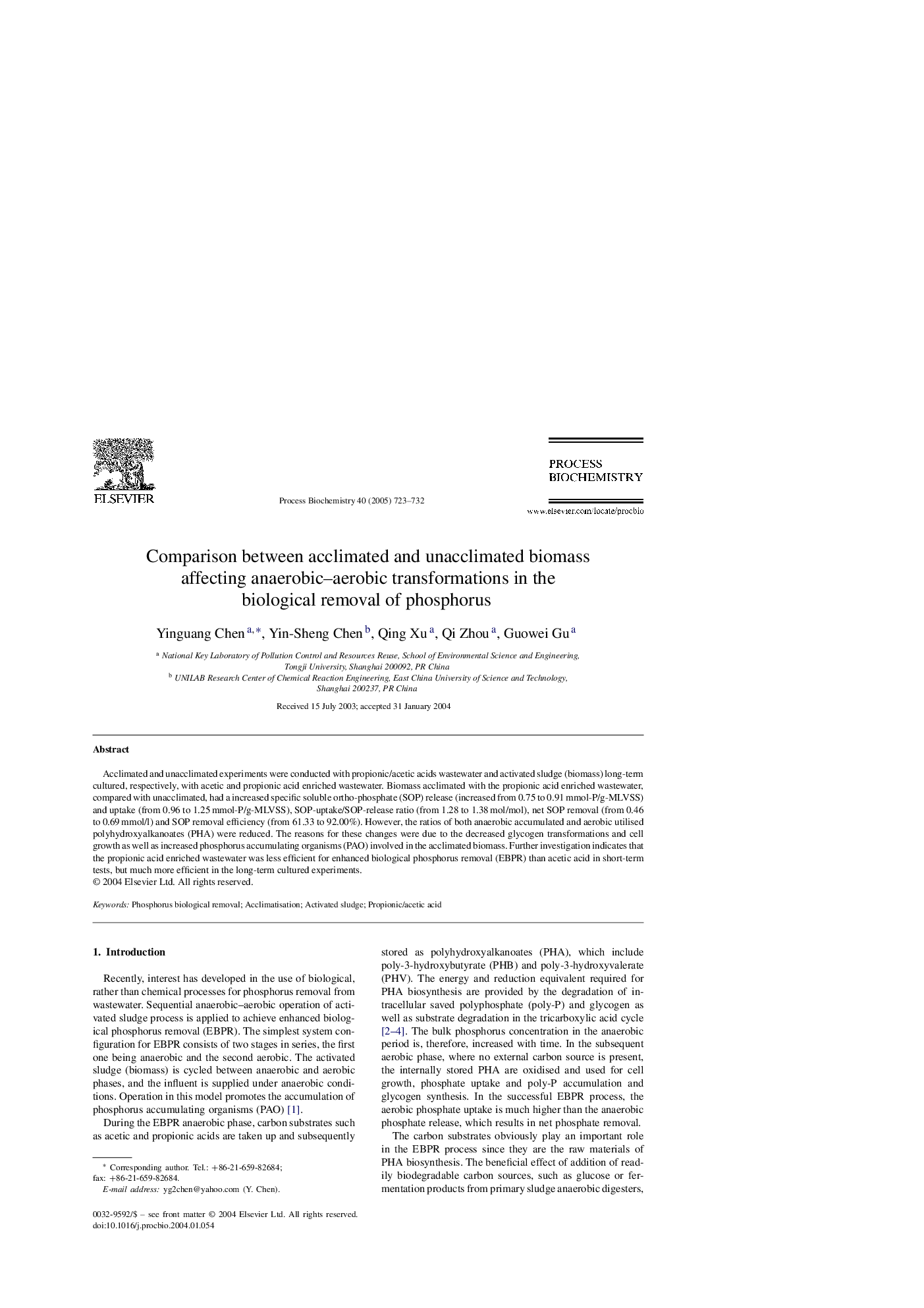| Article ID | Journal | Published Year | Pages | File Type |
|---|---|---|---|---|
| 10236300 | Process Biochemistry | 2005 | 10 Pages |
Abstract
Acclimated and unacclimated experiments were conducted with propionic/acetic acids wastewater and activated sludge (biomass) long-term cultured, respectively, with acetic and propionic acid enriched wastewater. Biomass acclimated with the propionic acid enriched wastewater, compared with unacclimated, had a increased specific soluble ortho-phosphate (SOP) release (increased from 0.75 to 0.91Â mmol-P/g-MLVSS) and uptake (from 0.96 to 1.25Â mmol-P/g-MLVSS), SOP-uptake/SOP-release ratio (from 1.28 to 1.38Â mol/mol), net SOP removal (from 0.46 to 0.69Â mmol/l) and SOP removal efficiency (from 61.33 to 92.00%). However, the ratios of both anaerobic accumulated and aerobic utilised polyhydroxyalkanoates (PHA) were reduced. The reasons for these changes were due to the decreased glycogen transformations and cell growth as well as increased phosphorus accumulating organisms (PAO) involved in the acclimated biomass. Further investigation indicates that the propionic acid enriched wastewater was less efficient for enhanced biological phosphorus removal (EBPR) than acetic acid in short-term tests, but much more efficient in the long-term cultured experiments.
Keywords
Related Topics
Physical Sciences and Engineering
Chemical Engineering
Bioengineering
Authors
Yinguang Chen, Yin-Sheng Chen, Qing Xu, Qi Zhou, Guowei Gu,
